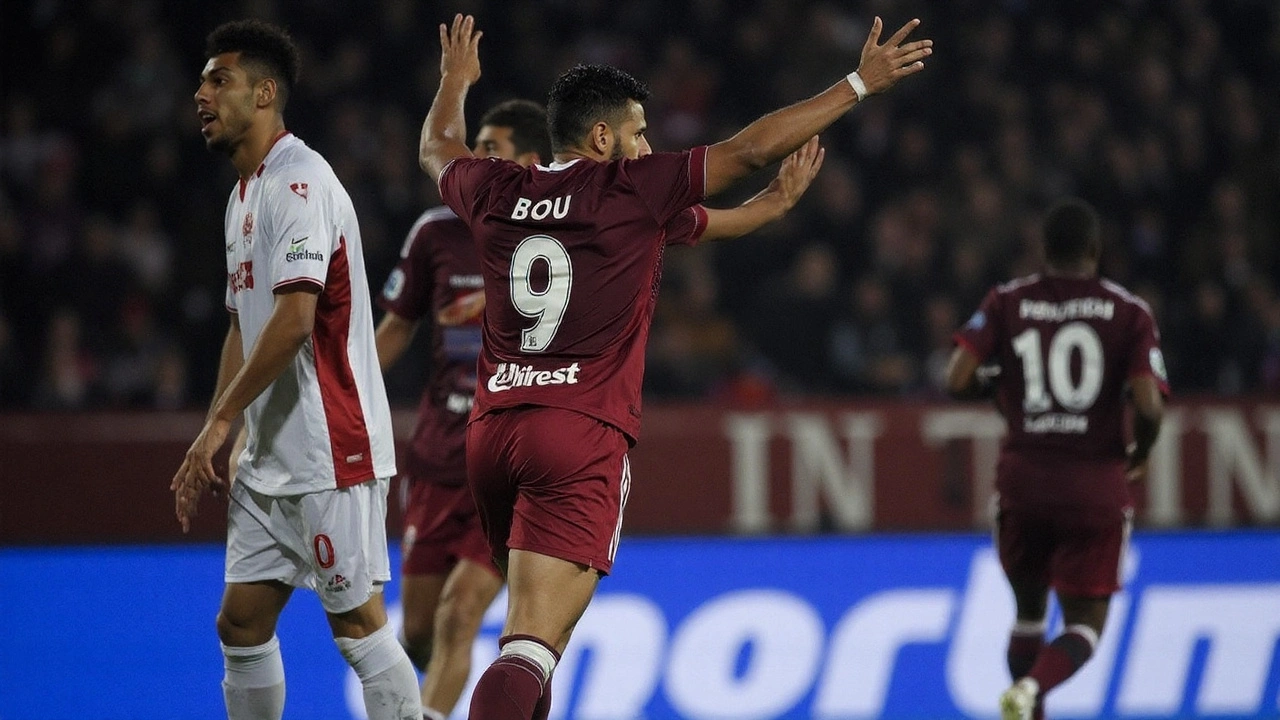Background and What Was at Stake
Both clubs knew the stakes before stepping onto the hallowed grass of the Maracanã. Lanús, fresh off a 1‑0 win in Argentina, hoped to become the first Argentine side in this edition of the Copa Sudamericana to reach the last four. Fluminense, a historical heavyweight in Brazilian football, counted on the roaring home crowd to overturn the deficit and keep their continental dreams alive.
The tournament, South America’s second‑tier club competition, has a reputation for nail‑biting ties and, unfortunately, occasional fan trouble. This quarter‑final was already billed as a clash of styles – a gritty Argentine side versus a technically gifted Brazilian side – making the match a prime target for passionate supporters.

Match Flow and the Unfolding Chaos
Early on, the game followed the script. Fluminense pressed hard, creating chances that made the Argentine defence sweat. The breakthrough came just before the break when Uruguay’s Agustín Canobbio curled a left‑footed strike into the top corner, equalising the aggregate score at 1‑1 and giving the home fans a surge of hope.
What should have been a routine halftime turned into a flashpoint. According to the Brazilian Military Police, a scuffle erupted among the visiting supporters in Lanús' designated sector. What began as an internal disagreement quickly spiraled, with chants turning into shouts and punches being thrown. The unrest spread like a wave, prompting police to intervene.
Police officers attempted to separate the rival groups, but the situation escalated when the Argentine fans turned their aggression toward the authorities. The clash was intense enough to force a temporary suspension of the match. The second half was delayed by several minutes while officers tried to restore calm and re‑coordinate the crowd.
On the pitch, the Argentine players watched the drama unfold with obvious concern. Several Lanús squad members, led by captain, made their way toward the stands to gauge the safety of their supporters. Referee Jesús Valenzuela, a Venezuelan official, was approached by the players and asked to consider the implications of the disturbance on the continuation of play.
When order was finally re‑established, the match resumed under a tense atmosphere. Both sides, now aware that any further incident could lead to disciplinary action, played with added caution. The episode served as a stark reminder of the fragile balance between passionate fandom and public safety in South American football.
While the final score of the second leg remained pending at the time of writing, the incident left an indelible mark on the competition. It sparked discussions among CONMEBOL officials about stricter security protocols at high‑risk venues, especially when teams travel across borders with fervent supporter bases.
For Lanús, the episode was a double‑edged sword – a chance to progress to the semifinals shadowed by concerns for their fans’ wellbeing. Fluminense, meanwhile, hoped the disruption would not derail their momentum after leveling the tie. The next steps for both clubs now hinge on the outcome of the match and the investigations that will follow the Maracanã clash.

17 Responses
The incident at Maracanã underscores a breakdown in crowd control protocols, which fundamentally compromises the match‑day operational matrix. When you factor in the hostile fan dynamics, the risk assessment model fails to allocate sufficient resources for rapid de‑escalation. In practice, the security deployment should have incorporated layered perimeter barriers and real‑time intel feeds. This kind of systemic oversight erodes the integrity of the competition.
Such a volatile spectacle, my friends, casts a looming shadow over the very essence of football's noble spirit. The chaos, though regrettable, intensifies the narrative of bravery displayed by the clubs. May the game emerge evermore resplendent after this tempest.
The Maracanã episode reads like a textbook case of how inadequate security planning can morph into a public relations nightmare.
Fans arrived with the usual fervor, yet the segregation measures were evidently insufficient to contain intra‑supporter friction.
What began as a verbal altercation quickly escalated into physical confrontations, a trajectory that should have been anticipated by any competent risk analyst.
The police response, albeit swift, seemed more reactive than proactive, highlighting a gap in coordination between club officials and law enforcement.
One cannot help but notice the irony that a match designed to showcase sporting excellence turned into a stage for societal unrest.
The players, especially the Lanús captain, made a commendable effort to assess the safety of their fans, a gesture often overlooked in match reports.
Yet, the governing bodies appear hesitant to impose decisive sanctions that could deter future disturbances.
Such hesitation fuels a culture where fan violence is tacitly tolerated, provided it does not jeopardize the final score.
The episode also reignites the debate on whether South American clubs should adopt European‑style stadium certifications.
If CONMEBOL were to enforce stricter licensing, clubs might invest more heavily in modern security infrastructure.
Conversely, such mandates could strain the finances of smaller clubs, creating a new set of challenges.
In the end, the Maracanã incident is a microcosm of larger issues: fan passion, inadequate oversight, and the perpetual balancing act between safety and spectacle.
One hopes that the ensuing investigations will produce concrete reforms rather than just empty statements.
Indeed, the operational gaps were glaring; addressing them should be the immediate priority for both clubs.
One could argue the violence merely mirrors the underlying socio‑political tensions that pervade South American stadiums.
While I respect the observation, it's essential to consider that fan culture is deeply rooted, that socioeconomic factors play a role, and that security cannot be a one‑size‑fits‑all solution, especially in venues with historic significance.
Fans bring energy, but safety protocols must evolve with the times.
The spectacle turned sour, and that's unacceptable.
Seeing the supporters’ passion turn into aggression was heartbreaking; it's a reminder that love for the game shouldn't cross violent boundaries. The clubs have a responsibility to foster a respectful atmosphere, and the authorities must enforce it consistently.
Totally agree 🙌 safety first, always! 🚨
One must question whether the entire ecosystem of South American football is complicit in glorifying chaos, a narrative that serves vested interests while marginalizing the genuine fan experience.
In accordance with standard regulatory frameworks, it is advisable that CONMEBOL undertake a comprehensive audit of venue security protocols, thereby ensuring compliance with both international best practices and local statutes.
The incident presents an opportunity for introspection within the sport's governance, urging a recalibration of priorities toward safeguarding participants and spectators alike.
While the narrative emphasizes disruption, the underlying resilience of the teams remains evident; their focus never wavered despite external turmoil. Such fortitude is commendable.
The emotional toll on the players is often overlooked, yet it can subtly influence performance metrics that analysts tend to dismiss.
Yet one must ask whether the prevailing discourse merely scratches the surface, ignoring deeper institutional failures that perpetuate such incidents.
Indeed, a surface‑level critique does little; comprehensive reform is indispensable 🙂